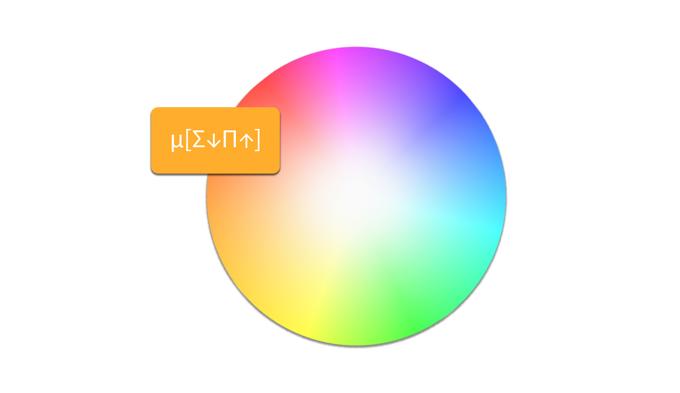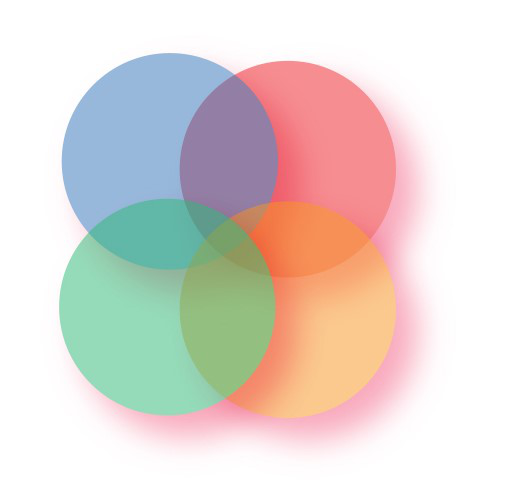Story
Personality types. Some people swear by them, others roll their eyes. Both are right.
Types. We’ve all had some kind of encounter. Maybe it was a throwaway quiz during a training day at work, or maybe it was a late-night dive down the “who am I” rabbit hole. They can give you a moment of recognition, like someone has finally named how your mind works. But they can also shrink us, turning that recognition into a meme, a caricature. CPT is what happens when you keep the recognition, but leave the caricature behind.

I started CPT in 2019 with the same mix of fascination and frustration a lot of people feel toward personality theory. On one hand, there’s something powerful in the idea that our patterns of thought and behaviour can be mapped. A personal insight that goes under the hood, that tells us something about ourselves we don't already know.
On the other, existing models split in two directions. Typology systems like MBTI™ aim to be explanatory, but often become prescriptive and cut off from reality. Trait systems like the Big Five are descriptive and predictive, but have little access to a person’s authentic experience. CPT offers a fourth way.
That search for a fourth way first took the form of my first book (Cognitive Personality Theory) in 2019, followed by a second edition in 2022, together reaching over a thousand readers and laying the groundwork for a community that’s now grown to more than 40,000 subscribers. But that was just the beginning of something more personal to me.
Today, CPT is no longer leaning on Jungian shorthand or internet archetypes. It’s rebuilt on its own terms: Not as a personality quiz, not as a fixed label, but as a navigation tool for human experience.



Beyond metaphors, beyond Jungian shorthand, beyond four-letter type codes. In their place is a syntax rooted in cognitive science and mathematical operators. Not poetry about archetypes, but a code that describes how experience is actually built.

Many people give up on typology: Type descriptions don't say enough, and the underlying theory often feels like a tangled web. CPT is different. It’s built like software: The front-end is plug-and-play. Start exploring your own cognition straight away, with clear tools that don’t require prior study.
The complexity is still there, but only if you want it. On the back-end, CPT scales infinitely, with layers of code and permutations for those who enjoy digging deeper. It’s simple if you just want clarity, complex if you need depth.

CPT doesn’t start with “types of people.” And it doesn’t mistake a minuscule building block for an entire region of the brain, or a whole module of the mind. It starts a level deeper – with the dynamics of experience itself: How attention shifts between foreground and background, how signals flow bottom-up and top-down, how processing tilts holistic or analytic.
And from there, its all emergent: Molecules pair together, and pairings emerge into entire networks. These aren’t boxes you’re sorted into nor static properties. They’re shared processes, distributed differently in each person within situation. The result isn’t a type carved in stone, but a living system – coherent, self-consistent, and always capable of change.

Typology systems tend to be hierarchical: this, and therefore not that. Good at one thing, bad at another. It’s all a slippery slope; in internet circles it quickly devolves into a strange caste system. Like something out of a Black Mirror episode: One minute you’re taking an online test, the next you’re ranked in the App Store – ⭐⭐⭐⭐ for logic, ⭐⭐ for empathy.
CPT works differently. It’s distributive: Everyone contains everything, expressed in unique patterns rather than magnitudes. Energy isn’t lost, only redirected. It’s not a system of binaries, but of flows: A map of ways and hows, not whats and nots. We contain multitudes, and CPT is built to honour that.


The CPT Compass - Cognition + Trajectory
CPT isn’t one-size-fits-all. Each mode is fully explained in the book and stays true to the same foundations, but offers a different way to interact with or read the system. Think of it like an app with multiple skins: The core remains constant, but you choose the interface that resonates with your style.
- Maths Mode – CPT Code: a symbolic language rooted in cognitive science.
- Legacy Mode – Jungian shorthand, the language of the first book and the channel, reframed at the level of first principles, not surface metaphor.
- Compass Mode – Tone and Zone: cognition and trajectory, the simplest entry point.
- Elemental Mode – Fire, Earth, Water, Air, with natural oppositions and conjunctions.
- I Ching Mode – CPT translated into the 8 trigrams, drawing on the elegance of classical Chinese structure.
And more. CPT is designed to be flexible and transferable; new modes are always in development. A preview of a more gamified/RPG mode, for example, is tucked inside one of the add-ons! Each mode is just a different way of seeing the same system. Pick the one that resonates, or switch between them.


CPT doesn’t freeze you in place – it shows you how you move, and moves with you. Some people crystallise into a 1-of-16 pattern, others spread more broadly across a 1-of-4, or something even looser. Both are valid, because CPT is more of a sandbox than an actual box.
Built on continuous first principles, CPT maps personality more as a spectrum – like an RGB colour grid. Everyone has a place; nobody has to cut themselves down to fit a label. It’s a container, not a cage: A system that flexes to match the way you actually live. Think less “character class locked at level one,” more open-world RPG: You can keep exploring, discovering, and expanding as you go.
